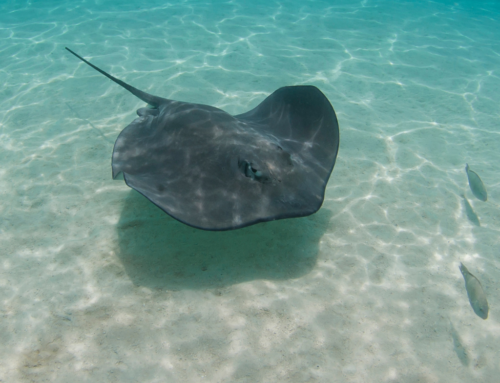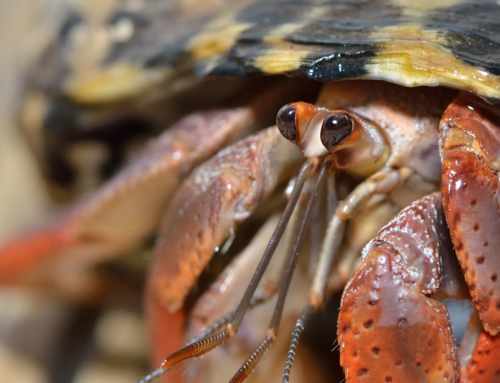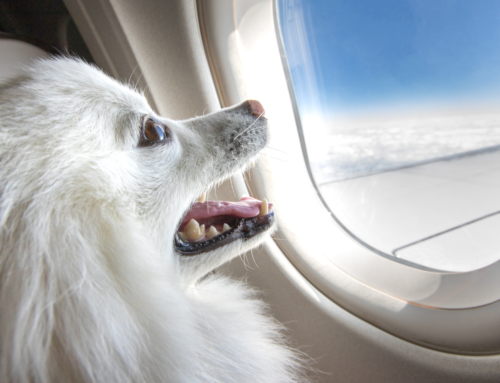
Swimming with dolphins is a major tourist attraction throughout dozens of tropical destinations worldwide. As someone who lived in an area of Florida with A LOT of wild dolphins, I learned a lot about how to interact with wild dolphins in a positive way. There are some major mistakes tourists make when interacting with dolphins, usually by accident. Here is a guideline on how to interact with wild dolphins, and what to avoid during your next tropical vacation!
Don’t Feed Wild Dolphins
The biggest rule about wild animals, in general, is not to feed them. While dolphins may come up to the side of your boat looking for food, especially if you’ve been fishing, NEVER feed them. It may seem harmless, but this reinforces a dolphin’s behavior to approach humans and boats in their area. This can be very dangerous and increases the likelihood of a dolphin being killed or injured by boat motors, poachers, or tangled up in a fishing line.

As a tourist, it is best to keep your money away from tours and companies that offer dolphin experiences with food. This includes physically feeding dolphins or throwing food out into the water to attract them. Both are seemingly harmless but can lead to dire consequences later in their lives.
Don’t Touch!
If a dolphin approaches you while swimming or near your boat, keep your hands to yourself! They most likely have been fed previously and have correlated humans with food. Don’t reinforce this behavior! Enjoy their presence nearby without offering them any positive reinforcement.
Touching a wild dolphin can also introduce new bacteria and pathogens to them that they may have not experienced before. You would feel awful knowing you contributed to a dolphin’s death, or even multiple, by introducing a new pathogen to the population.
If you see a tour company allowing guests to touch or physically interact with dolphins, report them! This is a major problem in high tourist destinations and can be detrimental to dolphin populations.
Don’t Directly Interact with Wild Dolphins
Local laws, especially in the United States, are very strict in regards to approaching wild dolphins. As a general rule, don’t get within 150 feet (50 meters) of a dolphin. If a pod approaches you, don’t intentionally get closer. It’s usually ok to enjoy the company of a dolphin that approaches you, as long as you do not feed or purposely touch them.
Intentionally swimming with a pod of dolphins has been shown to be very stressful for the animals. It can even separate mothers from their calves as they attempt to escape. Never jump in the water near a dolphin, and never book a tour that promises swimming, snorkeling, or diving with wild dolphins.

Pursuing or chasing a wild dolphin is considered harassment. This is against the law! Keep your eyes open in high population areas, but NEVER follow dolphins who are trying to swim away. Report any tour company that chases or follows pods of dolphins for interactions.
What to do if you see an Injured or Ill Dolphin
Many well-meaning tourists will try to help a dolphin that appears sick or injured by approaching it, touching it, and even putting it in their boat. This can cause further damage!
If you see an obviously injured dolphin, call the local Stranding Network. A stranding network is a type of animal control specific to aquatic life, and especially for aquatic mammals like whales and dolphins. Stay at least 150 feet away from the animal, and be as specific as you can about the location.
This also applies to a dolphin who seems stranded on a beach or in shallow waters. A stranded dolphin can be injured or ill without physically showing obvious symptoms, and are typically in incredible amounts of stress. Always call the local stranding network to be safe! You can find local stranding network numbers in the USA here. Tourism companies around the world should have their local numbers as well.
Where to Report Illegal Behaviors
Finally, to protect the wild dolphins, save the following number:
1-800-853-1964 if you will be in the USA. This is the National Oceanic and Atmospheric Administration (NOAA) and they take the welfare of ocean wildlife VERY seriously!

I hope this helped explain the reasons behind the strict laws surrounding wild dolphin interactions, especially in the United States. Keep these rules in mind as you travel abroad to countries that may not enforce these types of rules the same way. Always stay away from companies who chase, feed, or promise to directly interact with wild dolphins.
If you have any questions, feel free to contact me! I’d be glad to help in any way I can!
Shop Eco-Friendly Items
Sources
Patchett, Kirsten. Are You Helping or Harming? What to do if You Encounter a Stranded Dolphin. One Green Planet. 2016. https://www.onegreenplanet.org/animalsandnature/what-to-do-if-you-encounter-a-stranded-dolphin/.
Protect Wild Dolphins: Admire Them from a Distance. NOAA Fisheries. 2019. https://www.fisheries.noaa.gov/national/marine-life-viewing-guidelines/protect-wild-dolphins-admire-them-distance#:~:text=Life%20Viewing%20Guidelines-,Protect%20Wild%20Dolphins%3A%20Admire%20Them%20from%20a%20Distance,feed%20or%20harass%20wild%20dolphins.
Whitcraft, Samantha. Seaview: 5 Rules for Interacting with Wild Dolphins. Scuba Diving. 2011. https://www.scubadiving.com/training/advanced-skills/seaview-5-rules-interacting-wild-dolphins.
Like this article? Pin it!
















Leave a Reply